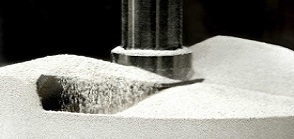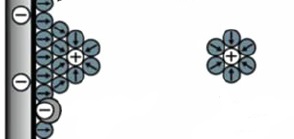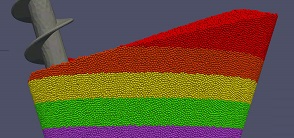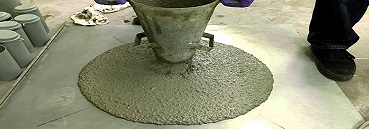Powder handling
Our goal is to bridge macroscopic features such as flowability, reaction extent, … with the properties of individual particles (size, shape, chemical composition, …) and the suspending medium (flow regime, temperature, pressure, composition, …). This approach is applied to powders and grains in a gas as well as to concentrated pastes such as cement and concrete.
Powders and grains
 |
|
Experiments
Our experimental activities concentrate on characterizing granular materials (chemistry, geometrical/physical structure, …), developing new instruments (flowability, cohesion forces, …) or measurement techniques (acoustic emission, …) and synthesizing/transforming powders and grains (atomization, mixing, grinding, compression, vibrations, …) |
|
|
|
 |
|
Modeling
We aim at developing models to simplify the complex reality and, especially, to derive physically-based laws that can reproduce the macroscopic behavior of granular material in an industrial scale. An academic position is now open on this topic to strengthen our capacity. |
|
|
|
 |
|
Numerical simulation
In order to gain in understanding, avoid costly or dangerous experiments, optimize a process, we are using and improving different numerical methods. In particular, we focus on methods well suited to describe granular materials and their interaction with a fluid : Discrete Element Method (DEM), Smoothed Particles Hydrodynamics (SPH), Lattice Boltzmann Method (LBM) and Two-Phase models (TFM). |
Cement and concrete
 |
|
Organic-mineral interactions
We study the synergic and competitive mechanisms of interaction between organic adjuvants and cementitious materials. Based on a deep knowledge of the physico-chemistry of hydraulic/calcic/ceramic binders and wood/polysaccharides, we explore the rheological properties of fresh cement as well as the hydration and setting phenomena. For that, we make profit of our extensive characterization facilities (rheology, setting time, physico-chemistry, thermal analysis, …) |
|
|
|
 |
|
Micro-organisms and cementitious materials
For economic and aesthetic reasons, it is of importance to investigate how cementitious materials react towards a biological colonisation (algae, mushrooms). Comparing the experimental data from in-situ and lab benches, we evaluate the influence of physical and chemical parameters on the substrate bio-receptivity. |
Group members






